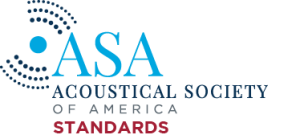We’re delighted to announce this set of newly reaffirmed ASA Standards:
S1 Committee (Acoustics):
ASA/ANSI S1.16-2000 (R2024)
Method for Measuring the Performance of Noise Discriminating and Noise Canceling Microphones
Abstract:
This American National Standard describes procedures for measuring the performance of noise discriminating and noise canceling microphones. The signal-to-noise ratio is measured at 1/3 octave band intervals with the desired test source in a diffuse noise field. The noise canceling performance of the microphone is defined as the noise canceling index (NCI), a weighted summation of the signal-to-noise ratios. The NCI of the microphone under test can be compared to the required baseline NCI of a laboratory standard pressure microphone.
ASA/ANSI ASA S1.26-2014 (R2024)
Methods for Calculation of the Absorption of Sound by the Atmosphere
Abstract:
This Standard provides the means to calculate atmospheric absorption losses of sound from any source, moving or stationary, for a wide range of meteorological conditions. The atmosphere is assumed to bestill, homogeneous moist air of normal composition. Non-homogeneous atmospheres can be divided into horizontal layers within which homogeneous conditions can be assumed. Attenuation coefficients for pure-tone sounds are calculated by means of equations (or a table) over ranges of frequency, and the humidity, pressure, and temperature of the atmosphere. For sounds analyzed by fractional-octave-band filters (e.g., one-third-octave-band filters), alternative methods are provided in annexes to calculate the attenuation caused by atmospheric absorption from that specified for pure-tone sounds.
S3/SC1 Committee (Animal Bioacoustics):
ASA S3/SC1.4 TR-2014 (R2024)
Sound Exposure Guidelines for Fishes and Sea Turtles: A Technical Report prepared by ANSI-Accredited Standards Committee S3/SC1 and registered with ANSI
Abstract:
This Technical Report presents the outcome of a Working Group that was established to determine broadly applicable sound exposure guidelines for fi shes and sea turtles. After consideration of the diversity of fish and sea turtles, guidelines were developed for broad groups of animals, defi ned by the way they detect sound. Different sound sources were considered in terms of their acoustic characteristics and appropriate metrics defi ned for measurement of the received levels. The resultant sound exposure guidelines are presented in a set of tables. In some cases numerical guidelines are provided, expressed in appropriate metrics. When there were insuffi cient data to support numerical values, the relative likelihood of effects occurring was evaluated, although the actual likelihood of effects depends on the received level. These sound exposure guidelines, which are based on the best scientific information at the time of writing, should be treated as interim. The expectation is that with more research, the guidelines can be refi ned and more cells in the tables completed. Recommendations are put forward defi ning the research requirements of highest priority for extending these interim exposure guidelines.
S3 Committee (Bioacoustics):
ASA/ANSI S3.25-2009 (R2024)
Standard for an Occluded Ear Simulator
Abstract:
The acoustical performance of an occluded ear simulator is specified. This device is designed to simulate the acoustical behavior of the ear canal between the tip of an ear mold and the eardrum, including the acoustic impedance at the eardrum of a median adult human ear. The occluded ear simulator is intended for transducers that are sensitive to acoustic load. It is also suitable as the basis for extensions intended to simulate the complete ear canal and the outer ear (e.g., head and torso simulators). Specific physical realizations of the ear simulator are described.
S12 Committee (Noise):
ASA/ANSI S12.64-2009/Part 1 (R2024)
Quantities and Procedures for Description and Measurement of Underwater Sound from Ships – Part 1: General Requirements
Abstract:
This standard describes the measurement systems, procedures, and methodologies used for the beam aspect measurement of underwater sound pressure levels from ships for a given operating condition. The resulting quantities are reported as nominal source level values in one-third octave bands. It does not require the use of a specific ocean location, but the requirements for an ocean test site are provided. The underwater sound pressure level measurements are performed in the far-field and then corrected to a reference distance of 1 m. This standard is applicable to any and all surface vessels either manned or unmanned. This standard is not applicable to submerged vessels or to aircraft. Measurement systems are described for measurement of underwater sound pressure levels and also the distance or range between the underwater transducers and the subject vessel. Processing and reporting of the data are described, and informational guidance is provided. This standard does not specify or provide guidance on underwater noise criteria.
ASA/ANSI S12.42-2010 (R2024)
Methods for the Measurement of Insertion Loss of Hearing Protection Devices in Continuous or Impulsive Noise Using Microphone-in-Real-Ear or Acoustic Test Fixture Procedures
Abstract:
This standard specifies microphone-in-real-ear (MIRE) methods for the measurement of the insertion loss of active and passive circumaural earmuffs, helmets, and communications headsets, and specifies acoustic test fixture (ATF) methods for the measurement of the insertion loss of active and passive earplugs, earmuffs, helmets, and communications headsets. The MIRE methods are appropriate for use with continuous noise whereas the ATF methods may be used with both continuous noise and high-level impulsive noise test signals. The standard contains information on instrumentation, calibration, and electroacoustic requirements, procedures for determining sound pressure levels in the ear with and without the hearing protection devices in place, and procedures for calculating the corresponding insertion loss values. The standard also describes how to combine the active contribution of insertion loss for active devices measured using the MIRE method with the passive real-ear attenuation measured in accordance with ANSI/ASA S12.6 to obtain an attenuation value for use in estimating sound pressure levels for active protectors in accordance with ANSI/ASA S12.68. Requirements for reporting of the data are also described.


Recent Comments